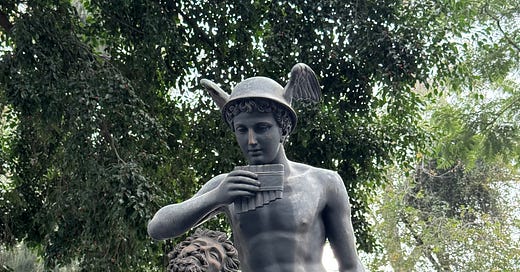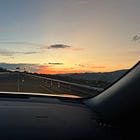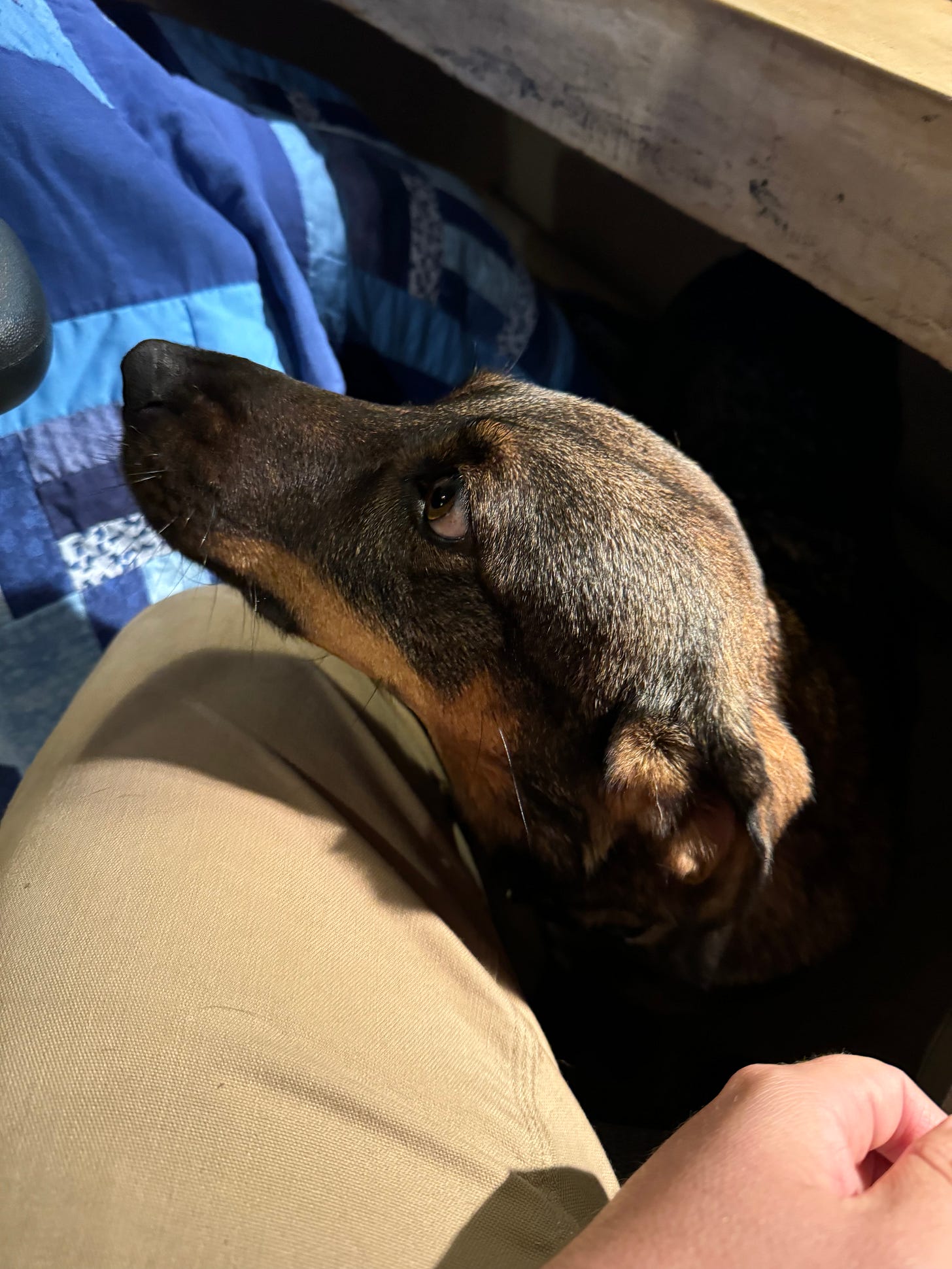No newsletters I’ve written have elicited a greater response than my recent entries about driving to Mexico City. I shouldn’t be surprised. While I think we’ve had many adventures since moving here, this was the first time we’ve come face to face with police corruption, been forced to pay a bribe, or driven at night on an unlit highway over the mountains where people steadfastly insist on passing at absolutely the most dangerous, inopportune moments.
If you haven’t read those entries yet I’m listing them below, in order. If they sound like your idea of a good time but you’re not yet a subscriber, here’s your chance!
Part 1:
Part 2:
Part 3:
When I was talking with my wife Andrea about what I should write about for today’s entry she said, “How about you write our time in Mexico City?” It was a great idea. In the aftermath of our trip I was focused on conveying the drama and disaster of the experience and skipped over what it was like to be back in Mexico City, the place which first made us think that a life in Mexico could truly be possible.
What It’s Like in Mexico City
There is a seductiveness to Mexico City, and repeat visits do not diminish that allure.
When Americans think of Mexico their mental images are skewed by popular portrayals of the country. It’s far too easy to think of this place as being either 1) beaches and resorts, or; 2) deserts, bordertowns, and cantinas. When Americans think of Mexico they almost always think of danger. We carried these same images and preconceptions with us the first time we visited and had a discussion about whether we felt it was safe enough to travel to.
I think it was our lack of understanding that made our first visits to Mexico City so formative. You can certainly find things in Mexico City that are stereotypically Mexican, but the city’s remarkableness will feel even more pronounced if you've been raised on stereotypes.
Mexico City, in many ways, reminds us of New York. It has very distinct neighborhoods and the city is jammed with people, buildings, activity, and life. It’s the kind of place where a friend (our lifesaver from my driving stories, Sophie Avernin) can recommend a Japanese bakery selling rolls stuffed with mentaiko (salted cod roe), and then one block later you can buy tacos straight from a dream. Going there makes us wistful for our old life, but also glad we moved. It is both familiar and new, comforting and novel.
The thing is, we’ve seen a tiny slice of Mexico City. Like most tourists our time there has been limited to very specific areas: Condesa, Roma Norte, Juárez, and Polanco. The only times we’ve seen other parts of the city are when we’ve taken food tours with our now-friend Rocío who runs Eat Like A Local, ventured out to see very specific things such as Frida Kahlo’s house (which is very boring!) or Restaurante Nicos (which is very good!), or gone to visit our friends who just moved to Mexico City in their own, glitzy, very unfamiliar neighborhood, Santa Fe.
The parts of Mexico City where we spend the majority of our time are wealthier and more modern, with better infrastructure and all the things a tourist could hope for. Condesa features wide avenues that are so thick with trees they’re virtually forested. Its apartment buildings are in the Art Deco style and there are a great many mansions built using French colonial architecture. Roma Norte is similar but more commercial and is densely packed with businesses and restaurants. Juárez is more modern still, and just a bit rough around the edges, but a great place to find a restaurant. And Polanco, one of the richest neighborhoods in the city, is where we’ve spent the last amount of time, largely because it’s a place that has welcomed American chains. You’ll see luxury cars, people with designer dogs, and lots and lots of very thin, very good-looking people in athleisure who are wealthy enough to not need to work. Polanco almost feels more like being in Maryland than Mexico.
Mexico City is simultaneously ancient and modern, both Mexican and international. This year, in 2024, it was estimated the population of the entire metropolitan area is 22,505,000 people. It is gigantic, and with that hugeness comes incredible depth, variety, and culture.
A Changing City
We’ve been visiting Mexico City for about five years and our first visit pre-dated the pandemic. Because of that particular timing, we’ve seen how the city has been hugely influenced by tourists and “digital nomads,” a term that, even as a person who works fully digitally, gives me agita.
We were attracted to the famed neighborhoods of Condesa and Roma Norte for the same reasons Mexicans love them. They’re old, beautiful, have incredible food and shopping, are easily walkable, and are safe. They’re famous for a reason.
By the time we made our first visit, we were already several years behind the curve. Magazines had been publishing breathless, adoring stories for quite a long time, long enough for us to think we, too, should check out the increasingly famed city. Because of that, I’m sure the steady march toward gentrification began long before we first arrived. Now, though, these neighborhoods have become so dense with tourists and expats that even we, tourists ourselves, can tell things aren’t quite right anymore.
My Spanish remains a work in progress and I have quite a lot of sympathy for people who freeze up when they’re confronted by a language they’re unfamiliar with. But during our most recent visit to CDMX, it didn’t seem like tourists were making any effort at all. The bros wandering into coffee shops couldn’t even be bothered with an “hola,” immediately ordering in English, and rather abrupt, rude English at that. They tipped poorly, or not at all (yes, tipping is a thing in Mexico now), and generally were ugly Americans.
As a result of the huge surge in tourism and expats, and the resulting increases in cost of living, Condesa and Roma have a not-insignificant volume of anti-tourist graffiti. After our experiences during this most recent trip, I kinda get it. But, much like in Oaxaca, the anti-tourist sentiment also feels broadly anti-immigrant, with people using a very real social problem—gentrification—to mask a preexisting and unrelated underlying hate.
It’s sad to see tourists creating circumstances that give racists a justification for their hatred. While we love these neighborhoods and would live there ourselves were circumstances different, they no longer feel quite as welcoming as they used to.
Impressions
We continue to love Mexico City, and it’s clear we need to explore well beyond our already familiar boundaries, but it’s not lost on us that tourism in the city is out of control and that locals are being pushed out of some of the city’s most popular neighborhoods. We’ve never particularly liked Polanco, largely because it is already so visibly commercial, wealthy, and American, and I worry that soon Condesa and Roma Norte will share a lot of those same, bland traits.
It’s also a bit peculiar knowing that our visitation doesn’t help the situation. We’re tied to Mexico now in a way that tourists are not, but just because we’ve got, for lack of a better term, street cred, doesn’t mean that we’re not also contributing to problems of gentrification when we visit. Although now, at least, we’re not staying in Airbnbs. That company, perhaps more than any other, is responsible for Mexico City’s woes. These days you can find us at a local hotel.









You know how I feel about this lovely place! Bravo to all of this!
Good for you, for not staying at an AirBnb!